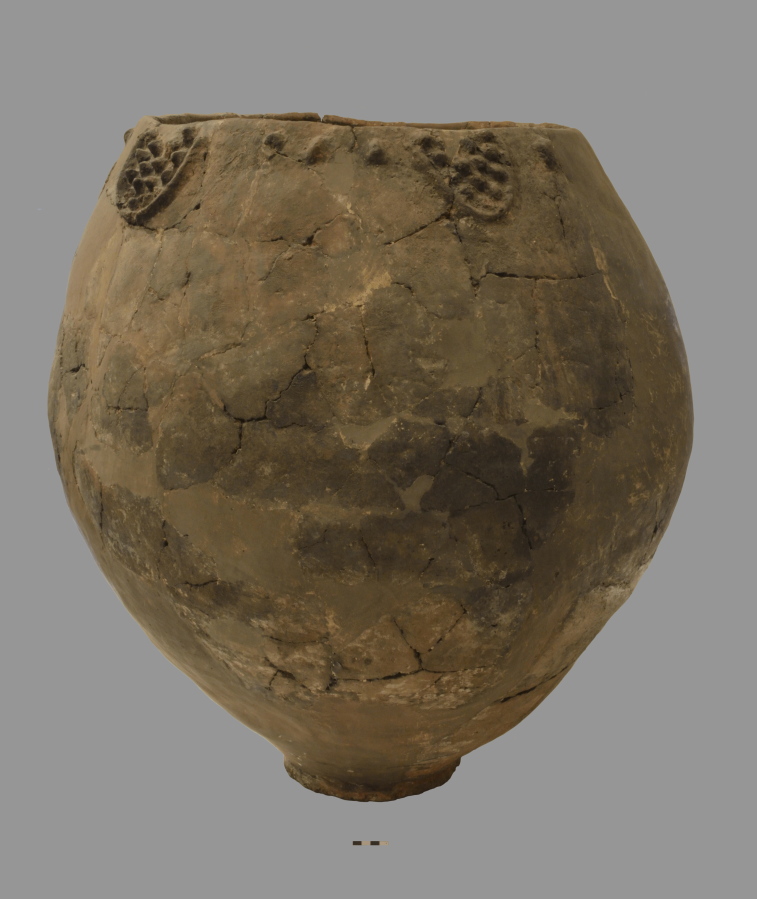At the next holiday dinner, when the discussion turns to politics and you reach for a second glass of merlot, consider this: Your social lubricant has 8,000-year-old roots. People were fermenting grapes and storing wine in massive jugs as long ago as 6000 B.C., according to a study published Monday in the Proceedings of the National Academy of Sciences.
The new research pushes chemical evidence of wine 600 to 1,000 years before the previous oldest estimates.
“This is a big time jump,” said Patrick McGovern, an expert in ancient wines at the University of Pennsylvania Museum and an author of the new study. McGovern and his colleagues analyzed pottery jars found in the Eurasian country of Georgia that dated to the early Neolithic period.
Ancient Georgians could have stored 300 liters of wine in the jars, which are about three feet tall. Small clay bumps are clustered around the rim. These decorations, the researchers hypothesize, represent grapes.
McGovern is confident that the pottery is old. “The radiocarbon dating is very precise,” he said. “We know the dating within 200 years.” The jars were created between 6000 and 5800 B.C.
The new insights came from a break in tradition. It is common practice for archaeologists to clean ancient pottery with a gentle bath of a mild acid or base. The corrosives reveal details in the pottery often hidden beneath a crust of accumulated minerals. But these baths also erase any traces of organic compounds stuck to the pottery. In the latest excavation, the archaeologists skipped the chemical scrub. This allowed researchers to extract four organic compounds present in the potsherds: citric acid, malic acid, succinic acid and tartaric acid.
Taken together, the relatively high concentrations of these acids point to wine. “The tartaric acid establishes grapes,” said Andrew Waterhouse, who studies the chemistry of wine at the University of California, Davis and was not a participant in this research.
Grapes are the only fruit in the Georgian mountain region that produce tartaric acid, McGovern said. Although some dirt-dwelling microbes can generate organic acids, soil samples showed no signs of the chemicals at high concentrations.
Fermentation left its signature in the form of succinic acid. The combination of succinic and tartaric acid, Waterhouse said, “is completely convincing that this is grape wine.”
A few other clues pointed to fermented grapes, too. The researchers found botanical evidence in ancient grape pollen, starch and bits of grape skin.
“We can’t prove the alcohol,” McGovern said. That evaporated ages ago. But he doubts the Georgians were big into nonalcoholic juice. Since the last Ice Age, winemaking conditions in this region of the Caucasus have been ideal. In a warm and mild climate, raw grape juice starts to ferment in a day or two. And it was unlikely, he said, that the Georgians would have allowed wine to ferment into vinegar.
Wine flows through ancient Georgians’ culture. They drank wine to celebrate births and left wine cups and pitchers in tombs. In ancient Egypt, pharaohs and kings drank wine; in ancient Georgia, everyone did.
“It became economically important, just like the wine culture in California and Oregon,” McGovern said. “Once these fermented beverages take hold of a society, they tend to become the heart of the society.”
Waterhouse, who called McGovern the “worldwide authority” on early wines, said that this study probably pushes the limits of what can be learned from wine jar pottery. Pottery itself is about 20,000 to 12,000 years old; before that, humans used animal hide and other materials to store liquids.
“Using leather to hold wine is well-documented in the Bible and elsewhere,” Waterhouse said. But vessels made of skin don’t preserve as well as pottery.
McGovern said he would not be surprised if humans consumed fermented fruits before there was pottery. He pointed to primates who haven’t figured out pottery but know about booze.



